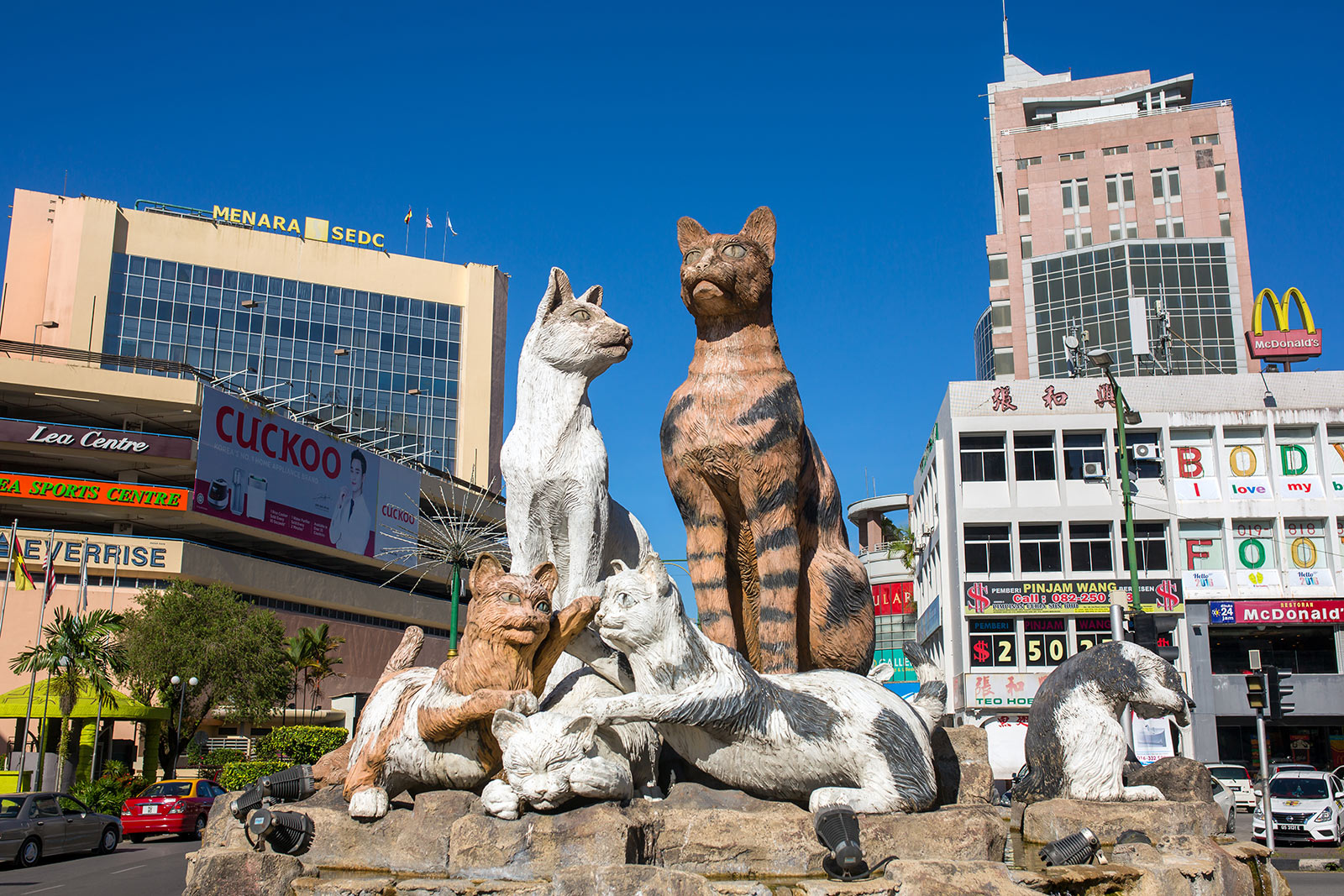
Why Sarawak rocks!
Published on March 1, 2020| by nst.com.my
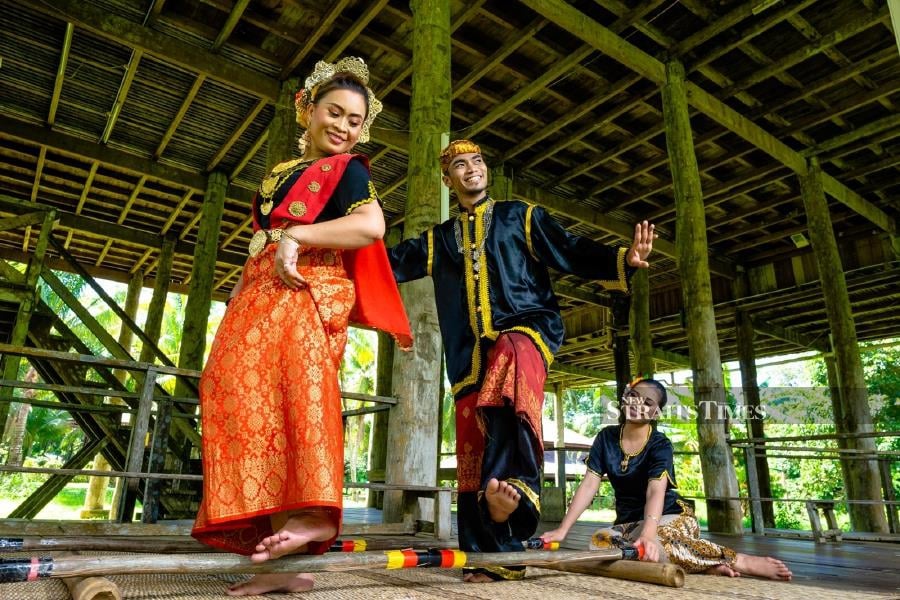
DARKNESS engulfs and suddenly, shadows seem to dance around us. An eerie stillness permeates, pierced only by the occasional splish-splashing sounds created by our wizened boatman as he “sweeps” aside floating wooden debris from our “path” along the Batang Ai River with his weathered oar.
The engine of our wooden longboat is off, so as not to disturb the tranquility of our surrounds. Up above, a magical halo framing it, is a bright full moon, our compass as we glide silently towards our destination — an Iban longhouse, deep in the interior.
Gingerly, I shift my now-aching derriere in the low boat making sure that I don’t cause it to rock unnecessarily. There’s barely enough room for luggage, our camera equipment and rations at the stern.
“Jangan jatuh… nanti kena makan buaya (Don’t fall or you’ll get eaten by the crocodile)!” someone from my production crew jokes ominously. Alarmed, I furtively bring my dripping wet hand, which had hitherto been absently stroking the water, back onto my lap.
“Buaya tu tak makan orang (That crocodile doesn’t eat people)!” exclaims a gentle voice, followed by an amused chuckle. And just like that, my momentary “wander” back in time to my documentary-making days with TV3 many moons ago dissipates.
Instead of the blissful glow of the moon bathing my surrounds, it’s the comforting rays of sunlight filtering in from a slight gap in the curtains of the cosy office of Sarawak’s Minister for Tourism, Arts & Culture, and Minister for Youth and Sports, Datuk Abdul Karim Rahman Hamzah, in Petra Jaya, Kuching.
Clad in the office staple of suit, shirt and tie, the bespectacled Minister, seated opposite me, looks bemused as I come to an abrupt conclusion to my tale. “Ohhh, that must have been a long time ago,” he says gently, before adding that a lot of things have changed since my days traversing Batai Ai, located approximately 275km from Kuching and site of the oldest Iban settlements in Sarawak.
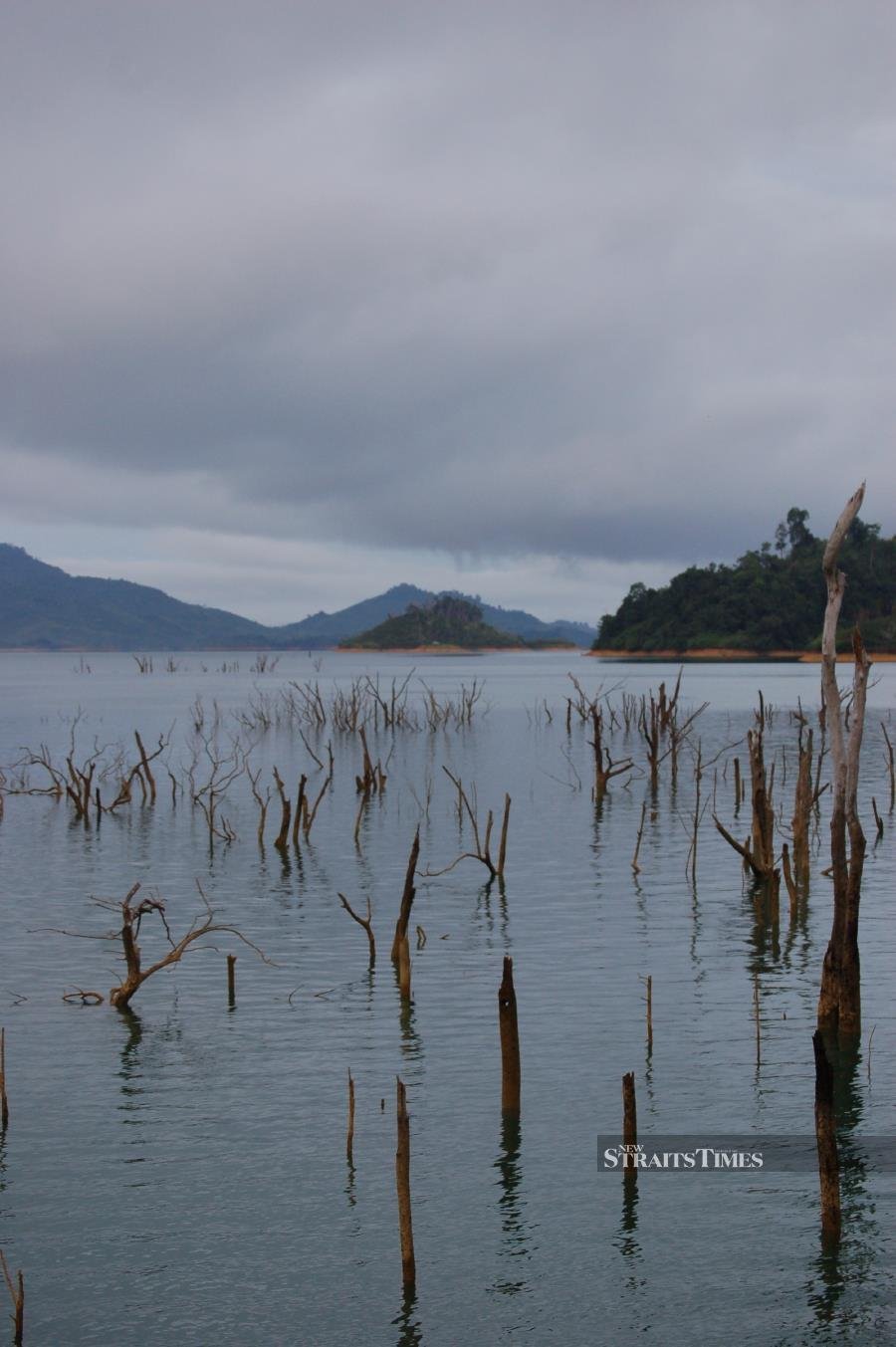
I duly learn that a hydro-electric scheme completed in 1980 dammed the Batang Ai river and created a 24sq km reservoir fed by four crystal clear tributaries of the Ai River. While many communities were resettled as part of the dam project, a number of Iban longhouses remained above the floodwaters.
“Sarawak is so exciting,” I couldn’t help blurting out, my mind once again travelling back to the heady days of exploring its unspoilt natural terrains and vibrant indigenous communities in the remote interiors.
The largest of Malaysia’s 13 states, Sarawak, Land of the Hornbills, truly is a treasure-trove of stories waiting to be told, I enthuse to the now-beaming Minister, a four-term assemblyman (MLA) representing Asajaya.
Nodding enthusiastically, Abdul Karim says: “Definitely we have a lot to offer. We’re not interested in offering Sarawak as a shopping paradise. We want to sell its culture, nature, adventure, festivals and food!”
In terms of diversity, the state truly embodies what it means to be ethnically, culturally and linguistically diverse. Six major ethnic groups make their home here, comprising the Ibans, Chinese, Malays, Bidayuhs, Melanaus and Orang Ulu.

In addition, there are also the other ethnic groups, which are smaller in number but nonetheless make up a substantial portion of the population. They’re the Kedayan, Javanese, Bugis, Murut and Indians. In 2015, the Bidayuhs and Ibans were officially recognised by the Malaysian government as comprising the Dayak people.
“Certainly, there’s much that we can tap into and promote,” adds the Minister, smiling contentedly. Asked how his beloved state has been faring in terms of tourists, the Kuching-born Abdul Karim shares that they’ve been seeing an encouraging increase in visitors from west Malaysia as well as Singapore. “And what’s more, they’re from the younger set — Internet-savvy and young professionals,” he exclaims, delightedly.
Adding, he says: “Last year, for the first time, we organised the Spartan Race (world’s best obstacle race). I was shocked by the overwhelming response to our event. More than 65 per cent of the participants were from outside of Sarawak and they told us it was the toughest Spartan Race that they’d entered.”
What made it more interesting, continues Abdul Karim, was the fact that they came at a time when Sarawak was grappling with a heavy haze problem. “The outcome was so fantastic that the organisers decided to organise more Spartan Race events here!”
EVENTS GALORE

In fact, Sarawak is beginning to build an enviable portfolio of events. Think Rainforest World Music Festival, the unique annual three-day music fest held in Kuching, which celebrates the diversity of world music, bringing together renowned world musicians from various continents and indigenous musicians from the state’s interiors, for starters.
“We also have our Kuching Jazz Festival, the Borneo Jazz Festival in Miri, and our Country Music Festival… ” the Minister reels off, enthusiastically. “Country music?” I splutter, my look of incredulity causing Abdul Karim to chuckle — again.
Eyes dancing behind his glasses, he explains: “John Denver-type country music. If you come to Coco Cabana, venue of the event, you’ll see everybody wearing cowboy hats! By nature, the Orang Ulu and the Bidayuh love that kind of music. The former will make their cowboy hats using tree barks. This year there are plans to bring the American pop and country duo, The Bellamy Brothers to Miri!”

Another area he’s looking into, confides Abdul Karim, the third of five siblings, is Sarawak’s cultural dances. There are plans to turn the old Sarawak State Legislative Assembly building into a state-of-the-art building where cultural offerings will be showcased. “There’s such richness in our traditional dances and performances. It would be a unique offering for visitors.”
Leaning back into his seat, Abdul Karim admits that he needs to ensure that not only Kuching, the capital and most populous city in Sarawak, gets to enjoy all these developments and events that are being planned. “I know that I need to start spreading out,” concedes the Minister, looking thoughtful.
The affable 60-year-old shares that Sarawak has an orchestra and cultural troupes and he wants to see them also performing in places like Miri and Sibu. “At least to be appreciated by Sarawakians in other parts too. In the meantime, in our efforts to bring in more visitors, we’re using events until such time when we don’t need to market anymore.”
NATURE’S PLAYGROUND
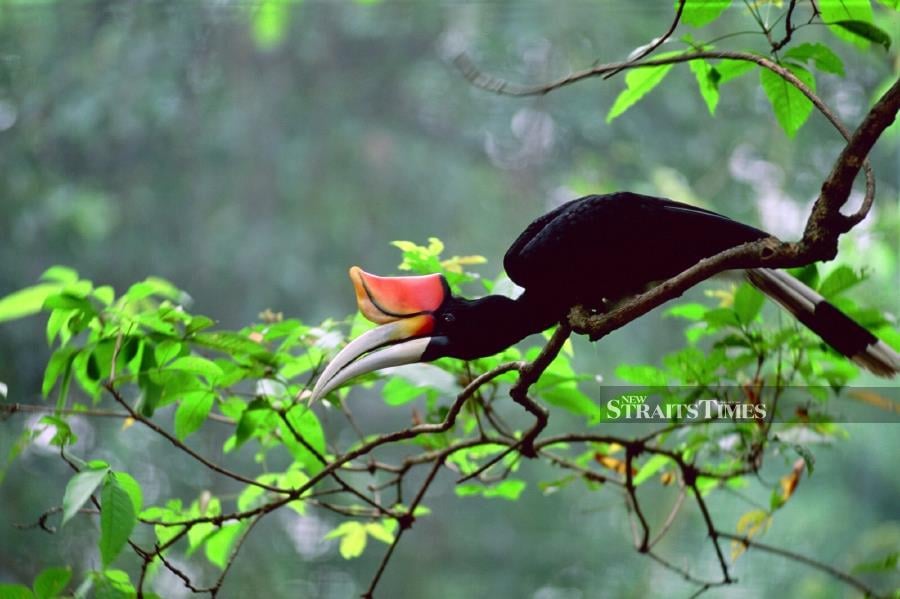
Music and events aside, something else that can be enjoyed in all its glory here is Sarawak’s nature. In fact, the entire state is an outdoor gem boasting 37 national parks, 14 nature reserves and five wildlife sanctuaries!
“You don’t have to go far to get to nature,” exclaims Abdul Karim, adding: “There are seven National Parks and nature reserves just in and around Kuching. The Bako National Park, Sarawak’s oldest national park, Kubah National Park, Stutong Nature Reserve, are all less than half an hour away.”
Continuing, he shares: “There’s also the Kuching Wetland National Park, recognised as a Ramsar Wetland site — that’s 20 minutes away. Our only problem is that we haven’t really capitalised on this. Those who love nature would love this place. These are among our new products which we’re working on for future attractions.”
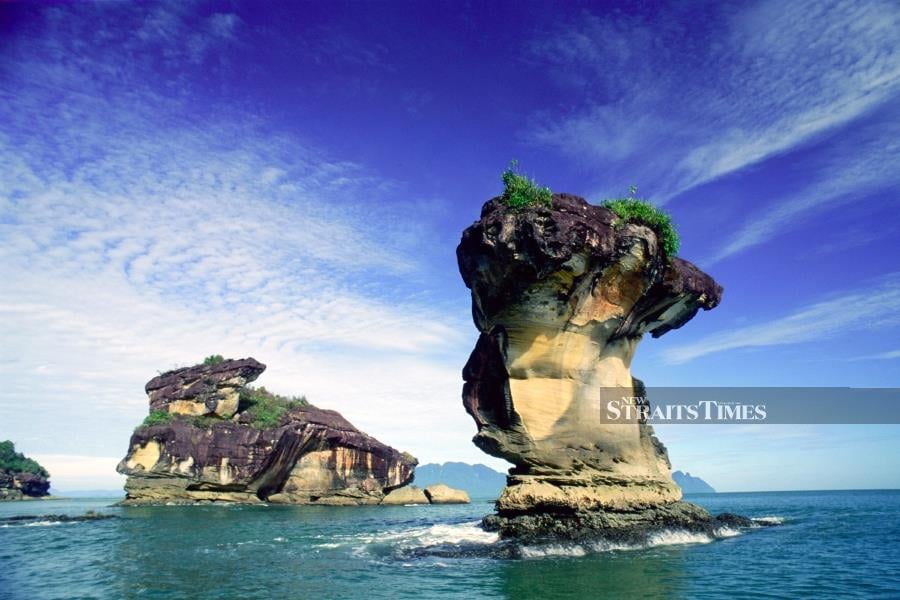
There are certain areas in Sarawak, which have been gazetted as sanctuaries, elaborates Abdul Karim. “For example, Sadong Jaya and Kampung Buntal, a fishing village located in Santubong. During the winter months in China and Vietnam, we get a lot of migratory birds here. We’ve more or less gazetted those areas and briefed the village folks not to disturb the birds because we want to turn the areas into a sanctuary for tourism.”
If there’s one thing that Abdul Karim, a former Assistant Minister for Housing and Youth Development is emphatic on, is the need to balance commercialism and conservation. Expression earnest, he confides: “Numbers isn’t my utmost priority. I’m looking to lure in ‘responsible tourists’, the type that won’t break corals or spoil our natural environment. We want the kind of tourists that can appreciate our nature and heritage.”
RICH CRAFT HERITAGE

Sarawak’s rich craft heritage is also under the scrutiny of the Minister and his team. “We’re seriously re-looking at this,” he concedes, adding: “I can see that Kraftangan Malaysia is doing very well with what it does. Unfortunately, I have to admit that our Sarawak Craft Council needs a little bit of a re-look into what they’re doing.”
Continuing, Abdul Karim says: “Over a span of eight to 10 years, you must be able to produce many talented artisans and craftsmen that can feed the market. If the number isn’t sufficient, then there’s something wrong. But it’s good we can see the weaknesses and we’re looking into remedying it.”
The father-of-four adds that Sarawak Energy Bhd, an energy development company and vertically integrated electricity utility with a vision to achieve sustainable growth for Sarawak, has also been helping their cause.
“They have their own CSR programmes deep in the jungles,” elaborates Abdul Karim. “In the Bakun Resettlement Area of Sg Asap, there are several longhouses producing amazing handicrafts. They’re being supervised by Sarawak Energy. The products made there are in high demand and we send a lot of these to Kraftangan Malaysia to promote and retail in Kuala Lumpur.”

Last year, Kuching was awarded “World Craft City” status, the first state in Malaysia to be honoured with this prestigious title. Suffice to say, it’s an accolade that Abdul Karim is supremely proud of. “We’re looking into developing and promoting many more of our rich crafts. We have the Malay Keringkam (a threading work that’s done to produce motifs used to make the lacy edging decorating the borders of the selayah or scarf), the Pua Kumbu (traditional patterned multi-coloured ceremonial cotton cloth used by the Iban) and recently, the latest mode in batik-making. Instead of using wax, we’re experimenting with sago.”
This innovative experimentation is being done by the Melanau people in Mukah, a coastal town two hours’ drive from Sibu. Then there’s the beautiful bead-works being produced by the Orang Ulu community or “up-river dwellers” mainly residing in Central Borneo, comprising the Kenyah, Kayan, Klemantan, Kelabit, the Lun Bawang, Penan, as well as a few minor tribes in the interior.
Adds Abdul Karim: “We have the Bidayuh too, found mostly around the Serian, Kuching and west Kalimantan areas, who are famous for their bamboo crafts. Slowly we’re in the midst of identifying and subsequently we’ll try to push for their crafts to come to the fore. We need experts who can help us to identify and polish all these offerings into products that can be promoted and accepted by the world.”
MISSION AND PASSION
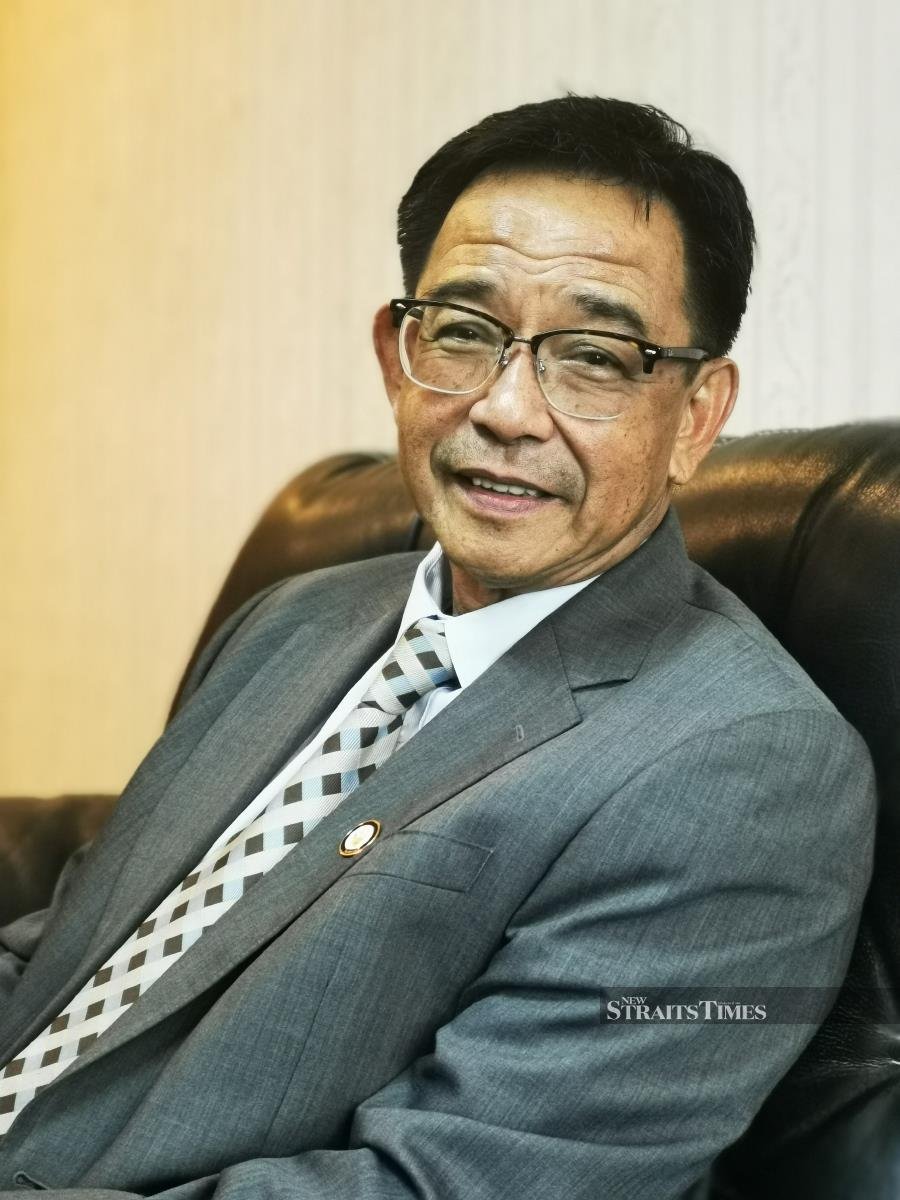
Growing up, Abdul Karim was passionate about sports. Cycling was his big thing, he confides, before adding with a chuckle: “If only in the 70s we had all the facilities that we have now, I’m sure I’d have been ‘somebody’ in the cycling world! Now I’m into big bikes. I regularly ride from here to Pontianak, capital of the Indonesian province of West Kalimantan.”
Asked whether he ever aspired to be a politician, Abdul Karim, who also loves fishing, shakes his head. “I’m a lawyer by profession. From the time I was in law school, I told myself I didn’t want to work with the government. I didn’t want to be a civil servant!”
Right after law school, he practiced in KL before returning to Sarawak where he set up his own legal firm. “I enjoyed being in private practice but in 2000, I had a call from the Chief Minister’s office (I was doing my Umrah at the time). He wanted me to be one of his political secretaries.”
Smiling fondly, Abdul Karim, whose father served as political secretary to Abdul Taib Mahmud, the Yang di-Pertua Negeri of Sarawak, recalls: “To be honest, I was worried. I enjoyed my work. I was wondering whether I’d still be able to practice. I knew that the salary of a political secretary was small! I told them to wait until I returned so I could consult my Attorney General. I asked if I could still practice. He said ‘yes’ and the rest is history!”








